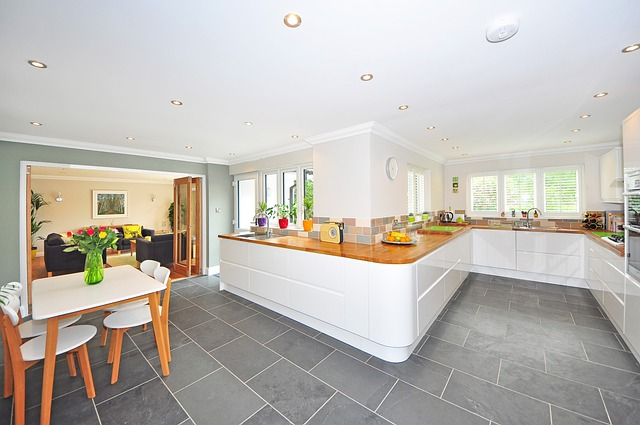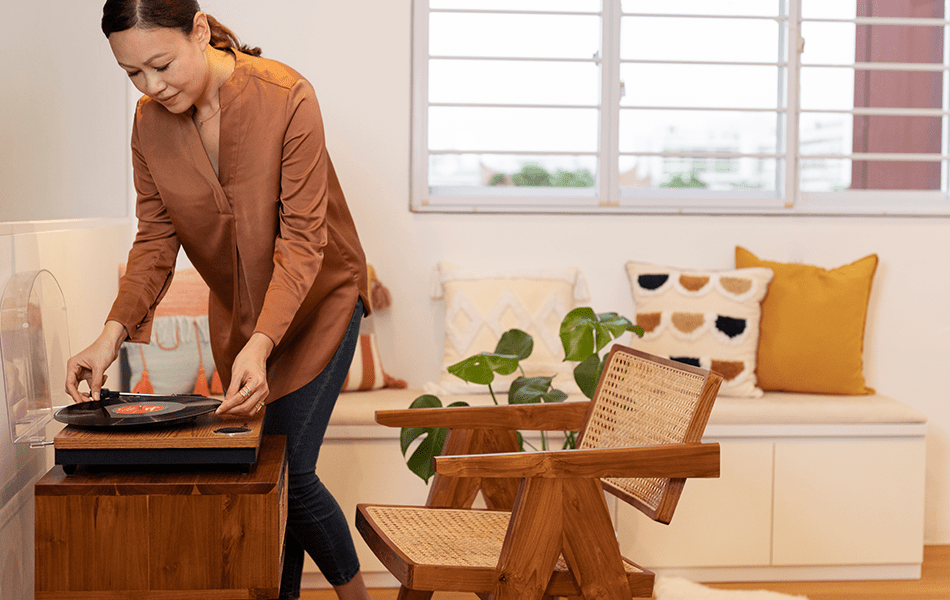The art of upcycling is a creative and sustainable approach to transforming waste materials into unique and functional home decor items. It goes beyond simple recycling by giving discarded objects new life and purpose, reducing waste, and promoting environmental consciousness. Upcycling allows individuals to tap into their creativity and ingenuity while making a positive impact on the planet.
The process of upcycling involves repurposing items that would otherwise end up in landfills or contribute to pollution. By utilizing old furniture, bottles, cans, textiles, and various other materials, upcyclers can turn them into beautiful and one-of-a-kind pieces for the home. Through innovative techniques such as painting, repainting, reupholstering, and rearranging, old and forgotten items are transformed into stunning décor elements with character and charm. Not only does upcycling bring a sense of fulfillment and personalization to home design, but it also promotes a sustainable lifestyle by reducing consumption and waste, making it a truly artful and eco-friendly practice.
Upcycled furniture ideas – 7 easy DIY revamps and repurposing projects
If you’re looking for creative ways to update your home decor while reducing waste, upcycled furniture projects are the perfect solution. With a little bit of imagination and DIY know-how, you can breathe new life into old furniture pieces and turn them into unique focal points for your space. Here are 23 easy and inspiring upcycled furniture ideas that will add character and style to your home.
- Repurpose an old ladder into a bookshelf or display stand by adding wooden planks between the rungs.
- Give an outdated dresser a fresh look by painting it in a bold color and replacing the knobs with unique vintage ones.
- Transform an unused wooden pallet into a trendy coffee table by adding wheels and a glass top.
- Convert an old door into a charming headboard by painting it and attaching it to the wall behind your bed.
- Upcycle vintage suitcases by stacking and securing them together to create a stylish storage unit or side table.
- Repaint and reupholster a worn-out chair to give it a modern and vibrant appearance.
- Turn a wooden crate into a stylish storage ottoman by adding foam padding and fabric upholstery.
These are just a few examples of the endless possibilities for upcycling furniture. With some creativity and a willingness to repurpose, you can transform discarded items into functional and eye-catching pieces that reflect your personal style while promoting sustainability. Upcycled furniture not only adds character to your home but also serves as a reminder of the beauty and potential hidden within everyday objects.
From wooden chairs to antique upholstery, here’s which old furniture is worth the time, effort and cost to restore

When it comes to restoring old furniture, some pieces are more worth the time, effort, and cost than others. While a matter of personal preferences and sentimental value play a role in the decision, certain types of furniture tend to be particularly rewarding to restore due to their durability, craftsmanship, and timeless appeal.
Wooden chairs, for instance, are often excellent candidates for restoration. Solid wood chairs, especially those made from high-quality hardwoods like oak or mahogany, can withstand the test of time and can be brought back to their former glory with some refinishing and repairs. Restoring wooden chairs not only enhances their aesthetic appeal but also preserves their functionality, making them usable for years to come.
Antique upholstery pieces also hold great potential for restoration. From vintage sofas to ornate armchairs, these furniture items often boast intricate details, craftsmanship, and unique design elements that make them worth the investment. By reupholstering antique furniture, you can breathe new life into them while maintaining their historical significance. It’s important to research and consult with professionals to ensure that the restoration process respects the original integrity of the piece.
What is it called when you repurpose furniture?
When you repurpose furniture, it is commonly referred to as upcycling. Upcycling involves taking old or discarded furniture items and giving them a new purpose or function. Rather than disposing of the furniture or simply refinishing it, upcycling allows you to tap into your creativity and reimagine how the one piece it can be transformed to serve a different role in your home.
The process of upcycling furniture often involves making alterations, modifications, or additions to the original piece to suit its new purpose. This could include repainting, reupholstering, rearranging, or combining different furniture elements to create something entirely unique. Upcycling not only promotes sustainability by reducing waste and promoting resourcefulness, but it also allows you to personalize your living space with furniture that has character and a story to tell.
Can I DIY Antique Furniture Repair?
Repairing antique furniture can be a delicate and intricate process that requires a certain level of skill and expertise. While some minor repairs and touch-ups can be done as a DIY project, it’s important to consider the complexity and value of the piece before attempting any major restoration work.
Simple DIY antique furniture repairs can include tasks like tightening loose screws, regluing loose joints, or replacing missing hardware. These tasks typically require basic tools and can be manageable for someone with moderate DIY skills. However, when it comes to more intricate repairs such as veneer restoration, intricate carving repairs, or structural fixes, it’s advisable to consult with a professional antique furniture restorer or a skilled craftsman. These experts possess the necessary knowledge and experience to handle fragile antique pieces with care and ensure that the repair work is done properly, preserving the integrity and value of the furniture.
Turn a plain sideboard into a captivating cane creation
Transforming a plain sideboard into a captivating cane creation can breathe new life into the piece and add a touch of elegance to your space. Cane furniture has a timeless appeal, and incorporating it into your sideboard can create a stunning focal point. With a few simple steps, you can achieve this beautiful makeover.
First, gather your materials, including a plain sideboard, cane webbing, cane reed, a utility knife, adhesive, and a small hammer or staple gun. Begin by removing any existing hardware and giving the sideboard a thorough cleaning and sanding to ensure a smooth surface for the cane application. Measure the dimensions of the areas you want to cover with cane webbing and cut the webbing accordingly. Apply adhesive to the back of the webbing and carefully press it onto the surface of the sideboard, ensuring a secure and even attachment. Trim any excess webbing using a utility knife.
Give a charity shop piece a new lease of life
Giving a charity shop piece a new lease of life is a wonderful way to support a good cause while bringing unique and affordable furniture into your home. With a little creativity and some handy DIY skills, you can transform a preloved item into a cherished and personalized addition to your living space.
Start by selecting a piece from the charity shop that catches your eye and fits your desired project. Whether it’s a worn-out chair, a dated dresser, or an old picture frame, envision the potential of the item and how you can breathe new life into it. This may involve sanding, painting, or reupholstering, depending on the condition and your desired outcome. With a fresh coat of paint, new hardware, or updated upholstery, you can completely transform the look and feel of the item. Let your creativity shine by adding personal touches such as stenciling, decoupage, or other decorative techniques.
Totally transform the dining table

If you’re looking to give your dining table a total transformation, there are several approaches you can take to revitalize its look and make it a centerpiece of your dining area. Whether your table is worn-out, outdated, or simply in need of a fresh update, a complete makeover can breathe new life into this essential piece of furniture.
First, consider the material of your dining table. If it’s made of wood, you can completely change its appearance by refinishing or painting it. Sand down the surface to remove any existing finish or imperfections, and then apply a new stain or paint color that suits your desired style. You can opt for a classic, rich wood stain to enhance the natural beauty of the grain, or go for a bold, vibrant paint color to create a statement piece.
Another way to transform your dining table is by changing the tabletop itself. Replace the existing tabletop with a different material, such as glass, stone, or even a reclaimed wood slab, to give it an entirely new look and feel. Alternatively, you can cover the table with a beautiful tablecloth or table runner that complements your decor style.
Bent plywood furniture
Bent plywood furniture is a captivating and innovative approach to furniture design that showcases the versatility and beauty of this material. Through a process known as bentwood or steam bending, thin layers of plywood are carefully shaped and molded into elegant and flowing forms. This technique allows for the creation of unique and visually striking, wood furniture and pieces that are both structurally sound and aesthetically pleasing.
The use of bent plywood in furniture design offers several advantages. Firstly, it enables the production of complex and organic shapes that are difficult to achieve with traditional solid wood or other materials. The flexibility of plywood allows designers to experiment with curvilinear designs, creating chairs, tables, and other furniture items that boast graceful lines and a sense of fluidity. Additionally, bent plywood furniture is known for its durability and strength. The layers of plywood are bonded together, creating a sturdy and resilient structure that can withstand regular use while maintaining its form.
BEFORE: Ladder and Scrap Wood
Before you lies a ladder and a pile of scrap wood—seemingly unrelated items with untapped potential. However, with a little imagination and resourcefulness, these materials can be transformed into functional and visually appealing creations. The ladder, typically used for reaching heights or as a utility tool, and the scrap wood, remnants of previous projects, hold the promise of a DIY adventure waiting to unfold.
The ladder, with its sturdy frame and rungs, can be repurposed into a unique shelving unit. By adding wooden planks or repurposed boards to the rungs, for example, you can create multiple levels of storage or display space. This ladder-turned-shelving can find its place in various rooms of your home, from the living room to the bathroom, providing a rustic and versatile storage solution. On the other hand, the scrap wood can serve as the building blocks for smaller DIY projects. Whether it’s constructing a small side table, a plant stand, or even decorative wall art, the assortment of scrap wood pieces offers endless possibilities. With a bit of cutting, sanding, and assembling, these discarded remnants can be transformed into functional and charming additions to your home decor.
What can I make out of old furniture?
When it comes to repurposing old furniture, the possibilities are virtually endless. With a little creativity and some DIY skills, you can transform your old furniture into unique and functional pieces that suit your needs and reflect your personal style. Here are just a few ideas to spark your imagination.
Old dressers or chests of drawers can be repurposed into stylish storage solutions. By removing or rearranging drawers, adding shelves or baskets, and giving the piece a fresh coat of paint or stain, you can turn it into a bookshelf, a TV stand, a kitchen island, or even a bathroom vanity. Chairs with worn-out seats can be given new life by reupholstering them with fabric that matches your decor or by repurposing them into plant stands or side tables.
Headboards and footboards from old beds can be transformed into unique benches or garden furniture by adding seat cushions and repainting them in vibrant colors. The key is to assess the structural integrity of the furniture, identify its potential, and let your creativity guide you in repurposing it to fit your needs and style.
Paint and wall-mount wooden boxes
Painted and wall-mounted wooden boxes offer a practical and visually appealing solution for organizing and displaying items in your home. With a touch of creativity and a few simple steps, you can transform plain wooden boxes into a collection of functional and decorative elements that add character to your walls.
Start by selecting wooden boxes that match your desired size and style. Consider using vintage crates, shadow boxes, or custom-built wooden boxes. Next, prepare the boxes for painting by sanding them lightly to smooth any rough surfaces and ensure proper paint adhesion. Choose a paint color or combination of colors that complement your existing decor or create a statement.
Bold and vibrant hues can add a pop of color, while neutral tones offer a timeless and versatile look. Apply multiple coats of paint, allowing each coat to dry thoroughly before adding the next.
Once the boxes are painted and completely dry, it’s time to mount them on the wall. Determine the desired arrangement and spacing for the boxes, whether in a grid pattern, staggered formation, or a customized layout.
Use a level and measuring tape to ensure they are aligned correctly. Securely attach brackets or hanging hardware to the back of each box, making sure they are properly aligned with the cabinet and chosen wall placement. Finally, mount the boxes onto the wall, following the manufacturer’s instructions for the chosen hardware.
What paint should I use to upcycle furniture?
Choosing the right paint for upcycling furniture is crucial to achieve a successful and long-lasting transformation.
Several types of paint work well for this purpose, depending on favorite color, the desired finish and the material of the furniture.
For wooden furniture, latex or acrylic paint is a popular choice. These types of paint provide good coverage, adhere well to wood surfaces, and come in a wide range of colors.
They are easy to work with, dry relatively quickly, and can be cleaned up with water. Satin or semi-gloss finishes are often preferred for furniture, as they offer durability and a subtle sheen.
When painting metal furniture, consider using enamel paint or spray paint specifically formulated for metal surfaces. Enamel paints provide a smooth and durable finish that can withstand regular use and exposure to the elements. Spray paint is particularly convenient for even and seamless coverage on metal surfaces, ensuring a professional-looking result.
HOUSEWORKS BEFORE: Wood Crate
A simple wood crate has the potential to become a versatile and functional piece in your home, offering a multitude of creative possibilities. Whether you have an old crate lying around or you’ve come across one at a thrift store, this humble item can be transformed into a stylish and practical addition to your living space.
Firstly, consider the crate’s size and structure to determine how it can best serve your needs. If you’re in need of extra storage, you can stack multiple crates vertically or horizontally to create a customized shelving unit.
Sand down any rough edges and add a fresh coat of paint or stain to match your decor. Alternatively, attach casters to the bottom of the crate doors for a mobile storage solution that can be easily moved around as needed.
If you’re looking for a unique side table or nightstand, simply add legs or hairpin legs to the bottom of the crate. This instantly elevates its functionality and aesthetic appeal. For a more rustic or farmhouse-inspired look, leave the crate as is and use it as a charming and simple storage solution for books, blankets, or magazines.
Add playful patterns and colour to pieces for kids rooms
Adding playful patterns and vibrant colors to pieces for kids’ rooms is a delightful way to infuse energy and creativity into their space. Whether it’s furniture, walls, or accessories, incorporating lively and whimsical elements can create a fun and inviting environment that sparks their imagination.
One approach is to use stencils to add playful patterns to furniture pieces. Choose stencils with kid-friendly motifs such as stars, animals, or geometric shapes. With a steady hand and some paint, you can easily transform a plain old dresser top, desk, or toy chest into a personalized and eye-catching focal point. Consider using a variety of colors to create a vibrant and cheerful atmosphere.
Another way to add color and pattern is by using removable wall decals or wallpaper. Opt for designs featuring cartoon characters, nature scenes, or abstract shapes to stimulate their imagination.
Apply the decals strategically on one wall or create a feature wall to make a bold statement. If you prefer a more subtle touch, consider the idea of using patterned wallpaper as an accent on a specific wall or as a backdrop for shelving or artwork.





